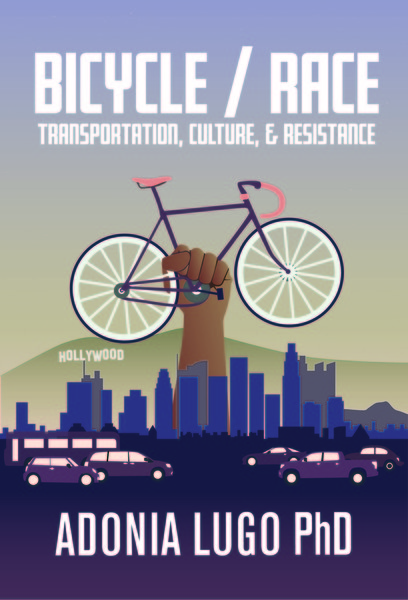Cultural anthropology, in the cyborgian, science-and-technology-studies, Deleuze&Guattari lovin' vein, is pretty okay with branching, tangential connections that turn out to be heavy with meaning. So sometimes, in the throes of a dissertation panic attack, I can spend a few days reveling in some fleeting obsession with a topic that does not seem to relate, directly, to bikes, bodies, and public space in LA. Most recently, this topic has been rock groupies, specifically Pamela Des Barres and her merry band of GTO's. Southern California in the late 1960s has been a longstanding "if I could time travel" destination of mine, and Miss Pamela's memoir I'm With the Band takes me there like whoa. And, besides the locale of Los Angeles, there is a slight connection to my research because...they drive everywhere? Who am I kidding, it's just a fascinating time period to read about.
Now that I've satisfied my modesty by burying the lede, here's a link to a talk I gave in March for Portland State University's Transportation Seminar Series. It's called "Bikes, Bodies, and Public Space: The Role of Human Infrastructure in Urban Transport," and you can watch a video of the talk (warning: I showed a stop motion video that has a lot of flashing images).
After the talk, I had lunch with a group of Masters in Urban Planning (MURP) students who are researching gentrification tensions in North Portland. Bike infrastructure projects in North Portland have contributed to ongoing concerns
about city investment and private development driving up costs in that
part of town, historically the heart of Portland's black community. East
Portland is now the most diverse part of the city, with many families
continuing to leave North Portland due to gentrification.
Debora Leopold Hutchins, chair of the North Williams Traffic Operations and Safety Project Stakeholder Advisory Committee, Ellen Vanderslice, project manager at the Portland Bureau of Transportation, and Alison Graves, the executive director of the Community Cycling Center, were also there. We had a funny moment when Debora thought the UR in MURP stood for "urban renewal," and the MURP students emphatically denounced the mid 20th century trend of bulldozing neighborhoods and replacing them with stadiums, highways, and housing towers. I love talking to critical urban planners!
There's not much bike infrastructure can do to keep housing affordable, especially if it gets used as an economic development stimulant. For this reason, a robust approach to bike promotion in underserved communities should include an equitable housing component, so I picked everyone's brains about affordable housing in
restored buildings, developments that blend intentional communities and
public housing, and other solutions to gentrification. It sounds like the city's forward-thinking bike planning may be ahead of their work in affordable housing. Personally I would love to convert the disused high school at SE 12th and Stark into an intentional community with affordable rents. So if anyone's got a few million dollars lying around...

